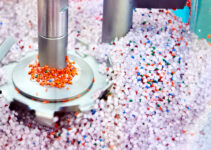
Medical technology, at present, is evolving at a breakneck pace. Implantable medical devices stand out as some of the most intricate, life-altering innovations in this sector.
This $91.5 billion implantable medical device market has everything from pacemakers to joint replacements. In America alone, there are over three million people who live with pacemakers. Over 2 million hip and knee procedures are done in the country almost every year, most of which involve joint replacement.
Hence, it’s safe to say that implantable devices bring hope to millions, improving quality of life and, in some cases, saving lives. Yet, their journey from concept to a functioning device inside the human body is fraught with challenges.
The complexity of their design, stringent safety standards, and the unpredictable nature of the human body make manufacturing implantable medical devices an arduous process.
Regulatory Oversight and Safety Protocols
Manufacturing implantable medical devices involves navigating a labyrinth of regulatory requirements. Authorities like the US FDA demand exhaustive testing to ensure safety and efficacy. This process, while essential, adds layers of complexity to production timelines.
Regulatory hurdles extend beyond initial approval. Post-market surveillance is mandatory, requiring manufacturers to monitor the performance of their devices and address any emerging risks.
These regulations, while protecting patients, place significant pressure on manufacturers to maintain exacting standards throughout the production process.
Are all implantable medical devices safe?
Not all implantable medical devices are inherently safe for every individual. Factors like a patient’s health, medical history, and potential risks such as infections, device malfunction, or rejection can affect their safety. It’s crucial for patients to consult healthcare professionals to assess risks and benefits tailored to their needs. Regular monitoring and follow-up are essential to ensure proper functioning and safety.
The Challenge of Material Selection
Choosing the right materials for implantable medical devices is another monumental challenge. These materials must be biocompatible, meaning they should not cause adverse reactions such as inflammation, infection, or rejection.
Commonly used materials include titanium, silicone, and specific polymers designed for medical applications. However, finding materials that meet these requirements while maintaining affordability and manufacturability is no small feat.
For instance, titanium is widely used because of its strength and compatibility, but it is expensive and difficult to work with. Silicone offers flexibility and biocompatibility but can degrade over time, leading to potential device failures.
Manufacturers often invest heavily in research and development to create or modify materials that can withstand the demanding conditions inside the body. This effort adds both time and cost to the production process, further complicating the manufacturing landscape.
More Chances of Manufacturing Defects
Despite rigorous quality control measures, implantable medical devices are not immune to manufacturing defects. These defects can arise from various factors, such as faulty materials, poor assembly practices, or inadequate testing protocols. The Bard PowerPort lawsuit highlights the devastating consequences of such defects.
The Bard Power Port device is a common implantable medical device used for administering medication or drawing blood. However, as TorHoerman Law points out, this device has been associated with serious health risks. Patients have reported complications like blood clots and device fractures, leading to a wave of Bard Power Port lawsuits.
These lawsuits underscore the high stakes involved in manufacturing such devices. Even the smallest error in production can lead to life-threatening complications. A defective implantable medical device can cause not only physical harm but also emotional and financial distress for patients. Blood clots, for example, pose serious health risks and require immediate medical intervention.
Can manufacturing defects in implantable devices be fully avoided?
Manufacturers face immense pressure to minimize the chances of such defects. Advanced technologies like robotics and artificial intelligence are often employed to enhance precision and detect flaws during production. However, no process is entirely foolproof, and the potential for human or mechanical error remains.
The High Costs of Manufacturing
Implantable medical device manufacturing is a super expensive process. R&D alone can take years and consume millions of dollars before a device reaches the production stage. Once in production, manufacturers must invest in state-of-the-art equipment to create devices with the necessary precision. For example, producing a stent requires specialized machinery capable of crafting intricate designs with micrometer-level accuracy.
Moreover, the costs don’t end with manufacturing. Post-market responsibilities, such as addressing lawsuits or conducting device recalls, can further strain resources. These financial pressures often translate into higher costs for patients, raising questions about the accessibility and affordability of such devices.
Why are implantable medical devices so costly to manufacture?
Implantable medical devices are among the most expensive products to manufacture in the medical field. The high costs stem from a combination of factors, including extensive research and development, sophisticated production techniques, and stringent regulatory compliance.
The Role of Patient Diversity
The diversity of the patient population adds yet another layer of complexity to the manufacturing process. Implantable medical devices must be designed to accommodate variations in anatomy, age, and health conditions. What works well for one patient may not be suitable for another, necessitating multiple iterations and customization options.
For instance, joint replacements must account for differences in bone density and joint structure, which can vary significantly among individuals. Similarly, devices like the Bard Power Port must be adaptable to patients with varying vascular conditions.
These variations demand a high degree of flexibility in both design and production, further complicating the manufacturing process.
The manufacturing of implantable medical devices is a testament to the intersection of cutting-edge technology and human resilience. These devices hold the promise of life-changing benefits but also embody the complexities and challenges of modern medicine.
From material selection to avoiding manufacturing defects, every step in the process demands precision, innovation, and unwavering dedication to patient safety. Manufacturers must rise to the challenge, ensuring that these vital devices deliver on their promise without compromising patient well-being.
